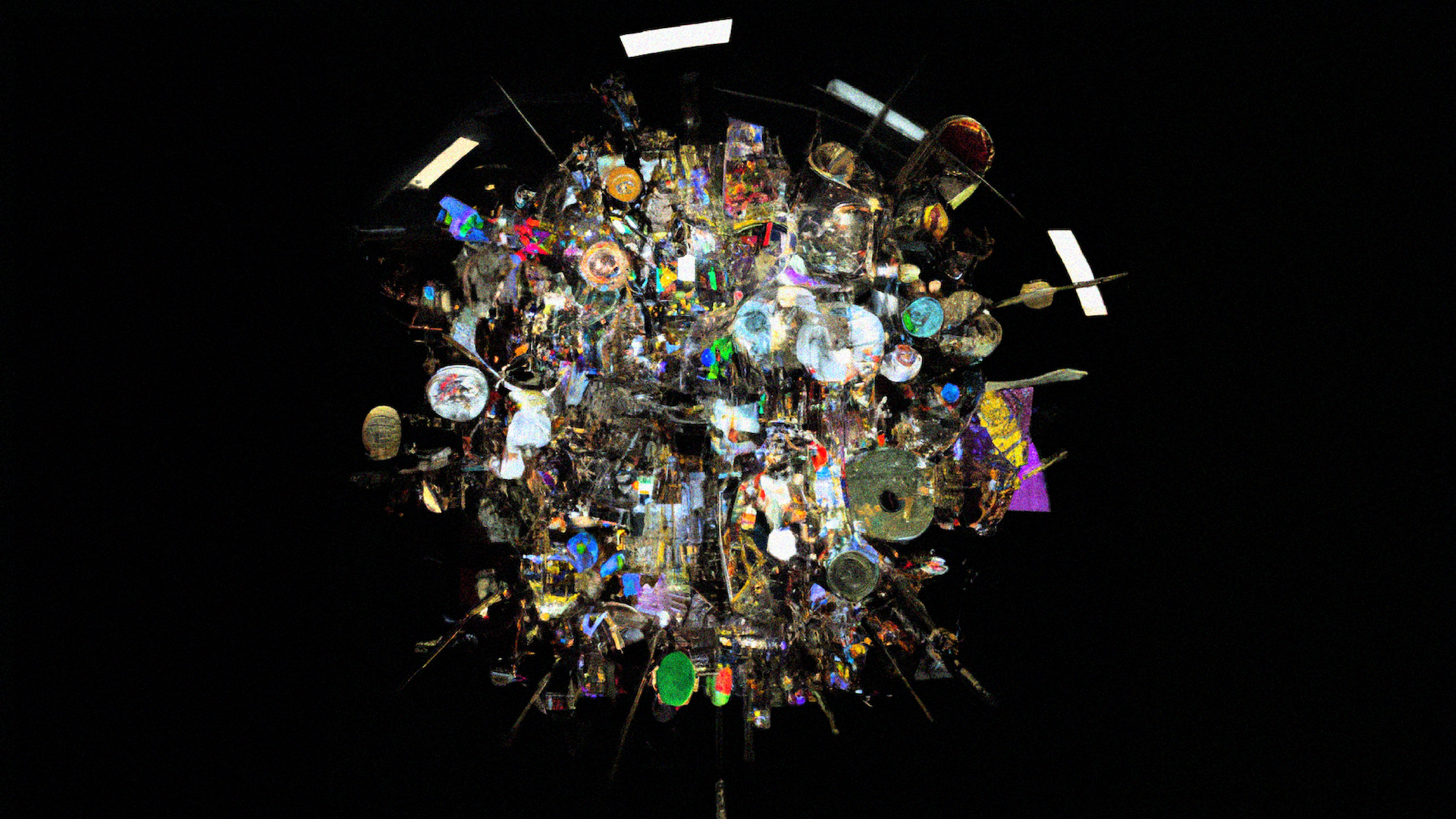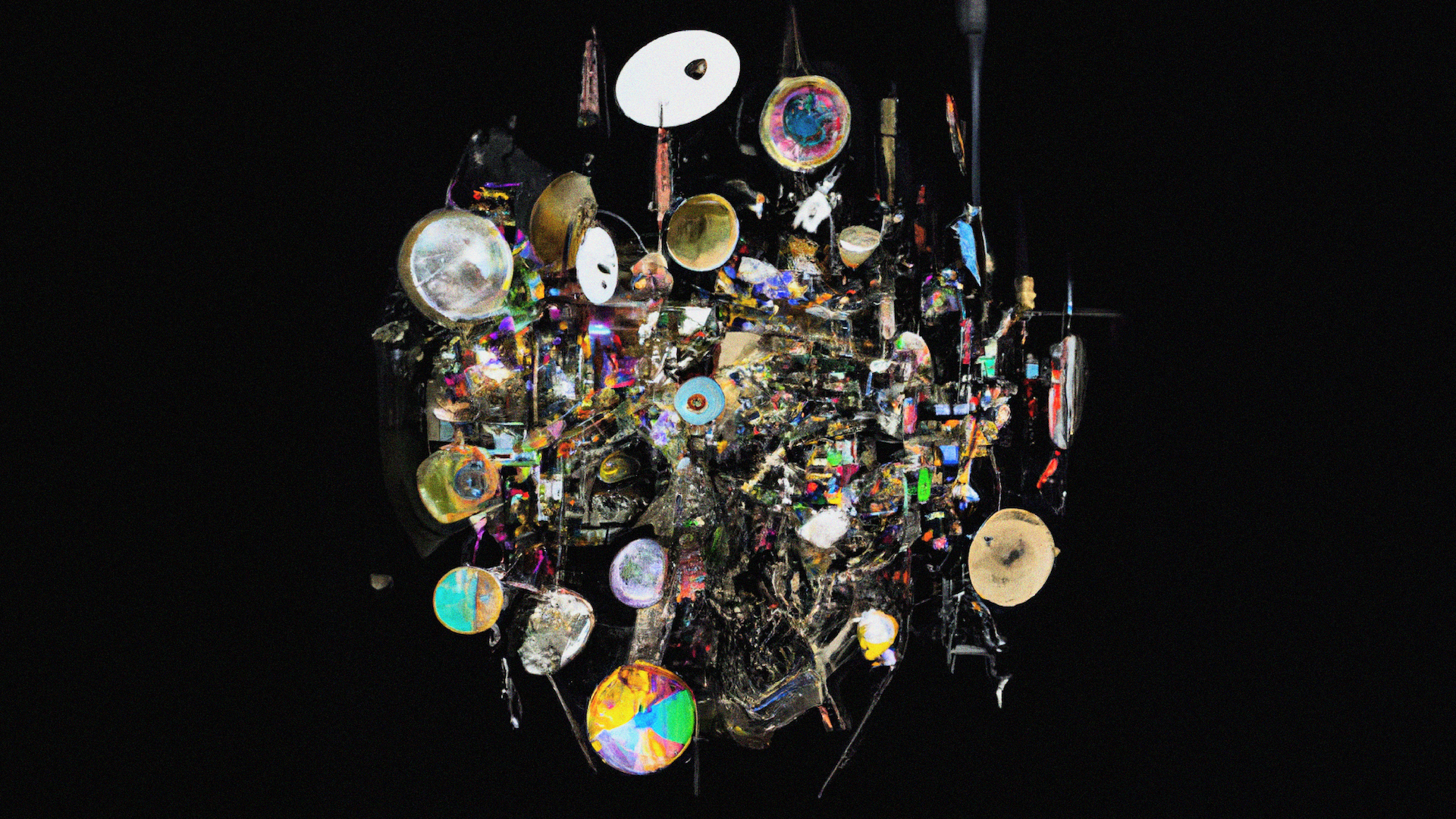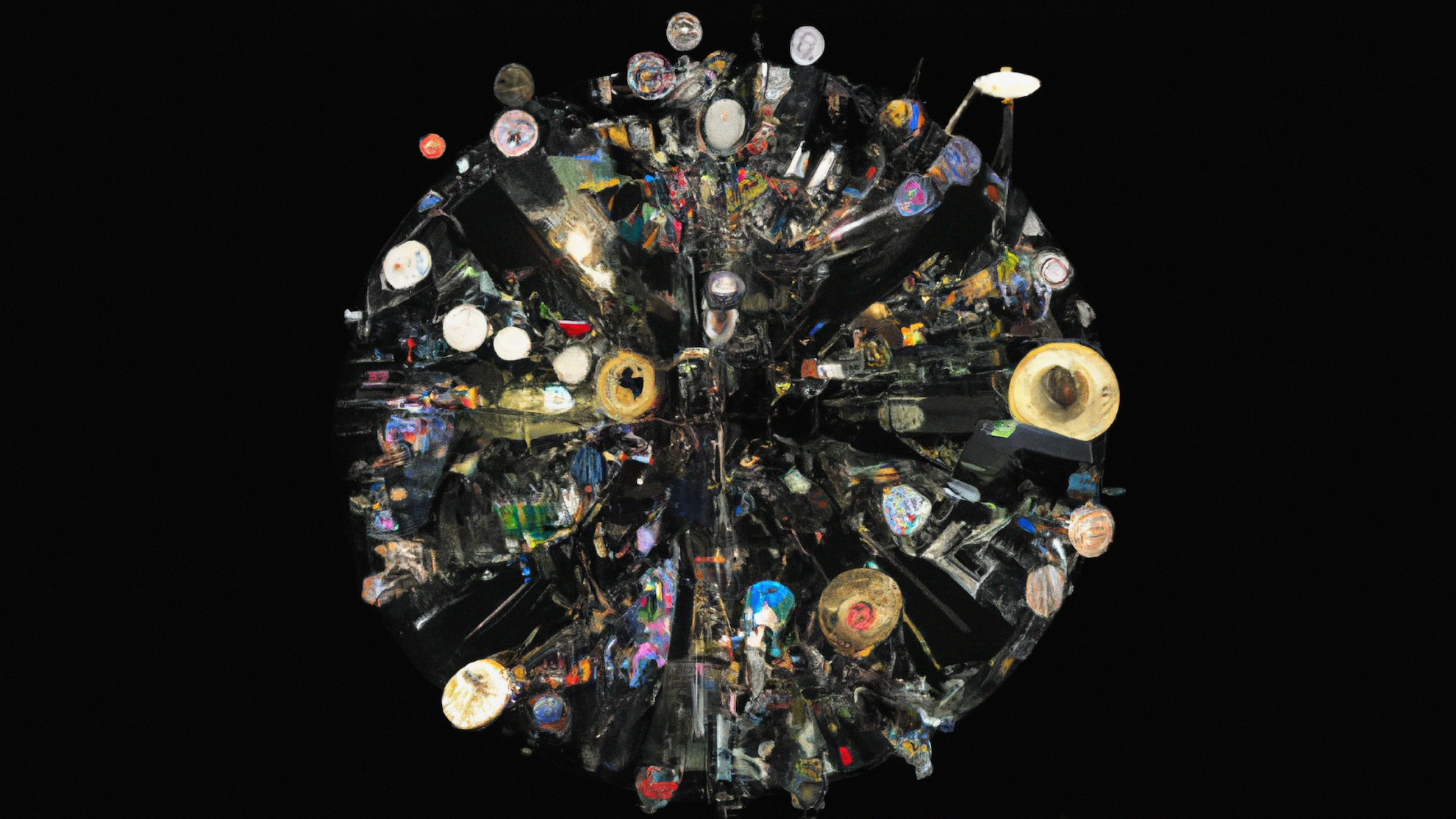- Aleph
- Anna Gat
- Ariel LeBeau
- Austin Robey
- David Blumenstein
- David Ehrlichman
- David Kerr
- Devon Moore
- Dexter Tortoriello
- Drew Coffman
- Drew Millard
- Eileen Isagon Skyers
- FWB Staff
- Gaby Goldberg
- Greg Bresnitz
- Greta Rainbow
- Ian Rogers
- Jessica Klein
- Jose Fernandez da Ponte
- Jose Mejia
- Kelani Nichole
- Kelsie Nabben
- Kevin Munger
- Khalila Douze
- Kinjal Shah
- Kyla Scanlon
- LUKSO
- Lindsay Howard
- Maelstrom
- Marc Moglen
- Marvin Lin
- Mary Carreon
- Matt Newberg
- Mike Pearl
- Mike Sunda (PUSH)
- Moyosore Briggs
- Nicole Froio
- Original Works
- Ruby Justice Thelot
- Ryne Saxe
- Simon Hudson
- Steph Alinsug
- The Blockchain Socialist
- Willa Köerner
- Yana Sosnovskaya
- Yancey Strickler
- iz

Wed Oct 26 2022

I got into bed at 11:00. It’s 5:30 now, and I’m stuck. What began as watching a few videos on TikTok to fall asleep has turned into a trap. Every other video I scroll past is a five-to-ten-second clip, usually backtracked by the song “Transgender” by Crystal Castles, promising to change my life in 24 hours if I like the video, follow the user, or repost the sound. “Tomorrow you’re going to get breaking news that will make you 100 times happier,” I am told. “It is going to be one of the best days you’ve had in a while. Interact three times to claim. Follow to claim.”
The process always begins lightheartedly. I’ll stumble upon a video where a young, self-proclaimed witch with “messages of affirmation” tells me that in three days I will become very wealthy, as long as I watch the video until the end and follow, like, and share. I do what the witch tells me to do, because why not? It may seem silly to let a video decide my fate, but I believe in positive thinking and manifestation, i.e. the idea of bringing something you want to fruition through mental visualization and practice. In fact, I live by it now. So I follow the steps.
As I continue to scroll, another video pops up. This time, a tarot reader is telling me, the viewer of the video, why my life is going so badly: mostly, they say, I can blame the current position of Jupiter and the Mercury retrograde. As they continue to read the cards, some of their readings hit, and some miss. But regardless, I manage to convince myself that they’re speaking to me, directly, alongside the other 100K viewers of the video. Here lies the trap: As the algorithm has caught on to how gullible I am, it’s started serving me more videos where I have to follow the steps; if I don’t, they say, I’ll end up having “the worst year of my life.” It’s like Gen-Z chainmail, but surprisingly more convincing.
It’s a phenomenon that sits at the nexus of old-world spirituality and new-age-coded worlds. I like to call it digital mysticism: A collective belief, emerging from our networked existence, that we can will a desired outcome into reality.
The kicker is that some of these videos actually work, at least in my experience. To give you an example, at the beginning of this year, I was living with one too many roommates in a city that I no longer loved. It was during this time that I came across the practice of manifestation. I watched a few TikTok videos that went a little deeper into the concept of “quantum jumping,” a manifestation technique that suggests that a person can create physical changes within themselves and “step into their desired reality” through creative and spontaneous visualization. To do this, I would visualize myself within my desired state, which was a new apartment with zero roommates, as though I were already there. I did this every night before bed for a month, and by the end of the second month, I was fully settled in my new apartment, just as I had imagined it.
I’m not alone in my belief: Many of these videos have thousands, if not millions, of views, with comments that seem to stretch into infinity. Often, you’ll see people posting the word “Claim,” a shorthand used by participants in this subculture to “tap” into the manifestation through a single comment. Others share that their manifestation came true in less than a few hours’ time.
With so many individuals engaging and believing in them so intensely, these videos inadvertently shine a light on something larger. It’s a phenomenon that sits at the nexus of old-world spirituality and new-age-coded worlds, both influencing and being influenced by technology. I like to call it digital mysticism: A collective belief, emerging from our networked existence, that we can will a desired outcome into reality.

A small part of me does wonder if the belief in the technologically mediated “mystical act” is simply an emotional contagion spreading across the coded networks that dominate our lives. Our minds, which through social media have become somewhat of a hive mind, all begin to engineer a more optimized sense of self, one that is perhaps more in line with our capitalist obsession with productivity: “richer,” but not necessarily happier (many of these videos reference tired hustle-culture tropes); “thinner,” but not necessarily healthier (on the more disturbing side of the spectrum, there is an entire subgenre of this sort of content with titles like “Manifest Weight Loss *Shocking Results*”). Over time, our interconnectedness begins to bleed into a sense of shared identity and belief systems, a phenomenon that has always been crucial in the creation of the mystical.
Keeping up with this onslaught of information also produces a sensation of timelessness. This becomes apparent in the moments where one manifestation video turns into another, then another, and you lose yourself in a state of belief and wonder. When you come back to earth two hours later, you realize your spaghetti is still sitting uneaten in the pot. We become immersed in a cycle of instant gratification, in which questions are answered before they have a chance to fully settle in our minds — and what’s left? The same things that make up mysticism: astonishment, fluidity, union with a broader field in which we experience a feeling of communion with others and time appears to develop on its own.
It’s interesting that these age-old spiritual practices are having a moment at a time when so many individuals, and young people in particular, are embracing and developing tools that promise us increased autonomy through digital ownership.
It may seem ridiculous to pull all this from a five-second TikTok video, but I’ve been thinking about this quite a lot. These “manifestation” videos have risen in popularity over the last two years, and more so in the current one, almost synchronal with the 2021 NFT boom and its 2022 bear-market second life. It’s interesting, but also not particularly surprising, that these age-old spiritual practices are having a moment at a time when so many individuals, and young people in particular, are embracing and developing tools that promise us increased autonomy through digital ownership. Both, after all, represent a form of taking control of one’s own life.
The belief in manifestation is nothing new. Rhonda Byrne, author of the popular 2006 self-help book The Secret, is probably chiefly responsible for the term’s 21st-century ubiquity, but the idea dates at least as far back as the 19th-century New Thought movement, founded by New Hampshire-born hypnotist and clockmaker Phineas P. Quimby. Drawing on ideas from metaphysics and mesmerism — a therapeutic technique popularized in the late 18th century by Franz Mesmer, who believed an invisible natural force possessed all living things — Quimby suggested that our thoughts could influence the material world, that infinite intelligence (or God) was everywhere, and that positive thinking could have a healing effect.
In “What Is Spirituality? A Personal Exploration,” Dr. Maya Spencer of the Royal College of Psychiatrists defines spirituality as “the recognition of a feeling or sense or belief that there is something greater than myself, something more to being human than sensory experience, and that the great whole of which we are part is cosmic or divine in nature.” It’s something of a catch-all term for belief systems that invoke transcendent principles without necessarily adhering to established traditions, and I believe that it captures the very essence of Web3. We see acts of spirituality in the crypto world every day, from ETH maximalists’ fervent prayers on Twitter for ETH to hit $10K, to animal-faced PFP avatars sharing their latest 10,000-character NFT collection, to shill threads hyping up “free airdrops” of questionable provenance. Even in the face of the current bear market, the belief in Web3 as a path to decentralized nirvana persists. “Bullish on whoever’s still here,” reads a popular refrain on Twitter.

Technology analyzes and divides unitary concepts into distinguished sub-constituents, which allows them to be manipulated to achieve a goal. This can be seen in any machine: mechanical, electronic, biological, or intellectual. The clocks tick with moving parts. The computer runs a series of sub-programs. Our body is a collection of interrelated systems. Thought is the analytical divide of reality into concepts. Having technology means having more possibilities.
Every time we invent a significant new device for communication — drawings on cave walls, books, the radio, the iPhone — we partially reconstruct ourselves and our world, creating new opportunities (and new traps) for thought, perception, and social experience. In his 1994 book Cyberia: Life in the Trenches of Hyperspace, the media theorist Douglas Rushkoff has a conversation with an urban neopagan witch named Green Fire. She tells him that “high technology and high magic are the same thing.”
The emergence of mysticism through information technology, specifically through Web3 and the concept of the metaverse, allows for the transmission of mind and meaning across new digital planes. The rapid advancement of VR technology, for example, has led to the creation of “metaverse spaces” where people can interact with each other in ways that are limited only by their imagination, free to explore different ideas and understandings of self. In the online virtual world platform VRChat, individuals are free to present as anybody or anything they want, even a fantastical being. Considered from an esoteric or mystical point of view, this intersection between technology and human expression gives birth to a belief/action: As I imagine, so I become. This is the very essence of mysticism.
We manifest for others, we manifest for ourselves. If we believe that the ALT coin we bought on a whim one day will go to the moon, and convince enough people to believe the same, what’s stopping it from happening?
I mentioned earlier that it’s possible to look at digital mysticism as a passing contagion between interconnected minds. But even if that is the case, there’s no denying that the phenomenon has the power to produce material changes in our world. Technology, seen in its most fundamental aspect, is a tool with the potential to unlock the power of the many. Within the Web3 space, we see the power of many surfacing through community, mutual support, collaboration, building, and viral amplification. We manifest for others, we manifest for ourselves. If we believe that the ALT coin we bought on a whim one day will go to the moon, and convince enough people to believe the same, what’s stopping it from happening?
Another way of looking at digital mysticism is that it reminds us that reality is being steered in large part by technology itself. When you’ve been thinking about buying a VR headset, and suddenly Meta begins to drop ad after ad on your Instagram and Facebook feeds, the cookies and the algorithms are working to give you what you already want. It’s as though technology is bringing into consciousness our innermost desires and beliefs, sometimes before we’re even aware of them ourselves — though one could also argue that it plays a huge role in shaping our desires, through planting seeds of envy and wanting in our subconscious mind.
As technology advances, it will continue to get better at reflecting our desires back at us. One day, the cycle of mystical prediction could accelerate to the point where we wake up to discover that we are living in a world where our objectives are always already fulfilled — one where we get our gratification instantly, where we all get our deliveries the same day, where we receive replies to our messages in under a second. This, surely, would not be the case for everyone: In a society as staunchly capitalist as ours, there will always be a stark divide between a privileged class of people who have access to the things they’re convinced they need, and others who have access to naught. But our intentions are certain and quick experience-creators, which means, in turn, that we must always be careful of what we wish for.

Technology is a tool that widens the scope of what is possible. But does having an abundance of possibilities always increase happiness? Not necessarily. In the book Paradox of Choice, American psychologist Barry Schwartz suggests that “an overabundance of options can lead to anxiety, indecision, paralysis, and dissatisfaction.” In building our dream utopia, we must be hyper-aware of the potential of manifestation, and manifestation through technology in particular, to bring about dystopia. Every day on the internet, including in the world of Web3, we see people wield its power to scam others out of their life savings, to summon strangers on the internet to bully their enemies, to will fake news or damaging conspiracy theories or extremely harmful beliefs into collective “truth.” We see individuals so caught up in the mass hysteria of the internet that they lose touch with reality; we worry, and with good reason, that their anger and paranoia could at any moment spill over into real-world conflict and violence.
Given the power of digital mysticism to shape our reality, how do we wield it wisely? Richard Thieme, a former priest who became an author and commentator on technology, wrote in Islands in the Clickstream that “Mysticism is not only insight; it’s a cry for truth and justice, a deep passion for getting it right. Mysticism without action is self-indulgence; action without mysticism always burns out.” We must use the metaphysical powers we are given, alongside the technology that we build, to try to summon into existence a reality that is more supportive and empathetic than the one we live in right now. Because if we don’t, it’s all for naught.
At the very least, the similarities and the parallels between mysticism and digital technology show that these two realms are ready for more productive discourse. For individuals who strongly believe in mysticism, technology brings forth an updated worldview and a testing ground for inventive new approaches. For technologists — and especially those who are less inclined to believe in the mystic and the spiritual — mysticism can provide guidance for exploratory development, along with a deeper understanding of how the tools they create interact with our desires to manifest real-world results, for better and for worse.
So much of our imagination exists and will continue to grow within these digital planes. As they continue to expand, and our abilities within them, how will you engage in the realm of digital mysticism?
Moyosore Briggs is a multi-hyphenate artist and model based in London, where she currently works as a photographer, exploring digital manipulation, self-portraiture, and creative technology in Web3. Alongside her photography, Moyosore’s art practice encompasses writing and publishing. She’s worked as a contributing editor at multiple publications, in addition to self-publishing her own written and photographic work.
Art by Moyosore Briggs


